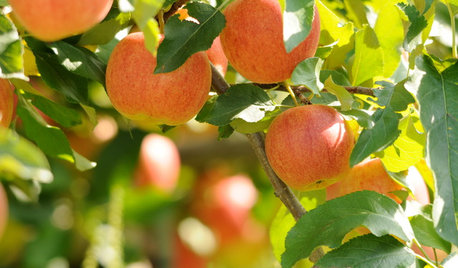Pluot pollination
geraldo
16 years ago
Related Stories

TREESHow to Plant a Fruit Tree
Great Home Project: Choose the best tree for your region, plant it to thrive and enjoy sweet rewards year after year
Full StoryMore Discussions
(Geez, I hope I am using the terms pollinator and pollinizer correctly. I know there is one of you on here who has a fetish about the proper use of those terms. Who is that? Still, I won't mind being corrected.)
It appears that you have to have everything set up just right to get your pluots pollinated.
Two different locations on my place and I see the same phenomena:
I have Dapple Dandy and Flavor Supreme in one location with Laroda and Catalina nearby for pollinators.
It appears that if the Laroda is within 18 to 36 feet of the Dapple and Supreme then I have a crop, but if the Laroda is 50 feet away you can forget it. I really don't understand that. Surely the patronizing bees (hey, that's what the spell checker says to use), that can fly miles from their hives, are not bypassing a tree fifty feet away. I mean, the trees have flowers and bees like flowers.
I have seen apples and cherries apparently get pollinated if they are within several hundred feet of each other. But I have Flavor Grenade and a whole bunch of different plums and pluots at the ends of two rows and the FGs get pollinated. Two hundred feet down the row I don't have the assortment of plums and pluots, but mostly just the FGs, and the FGs are very light. It might be frost, as frost can sometimes be tricky, but knowing my property like I do, I don't think so.


eric_wa
joereal
Related Professionals
Grand Haven Landscape Architects & Landscape Designers · McKinney Landscape Contractors · Apollo Beach Landscape Contractors · Arden-Arcade Landscape Contractors · Berkley Landscape Contractors · Broadlands Landscape Contractors · Commack Landscape Contractors · Golden Gate Landscape Contractors · Hickory Hills Landscape Contractors · New Providence Landscape Contractors · Roseville Landscape Contractors · San Bruno Landscape Contractors · New Carrollton Landscape Contractors · East Norriton Landscape Contractors · Selma Landscape Contractors